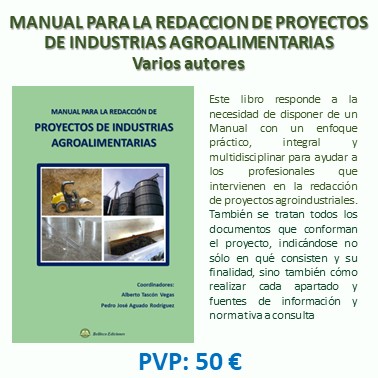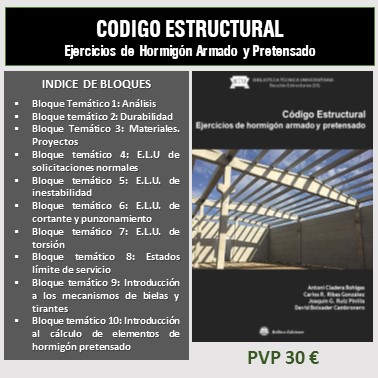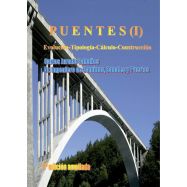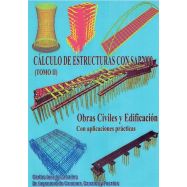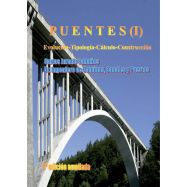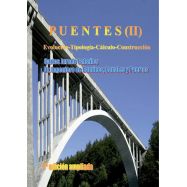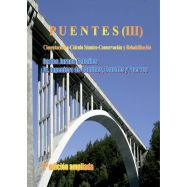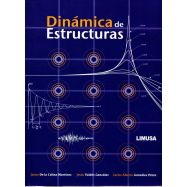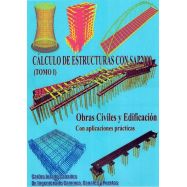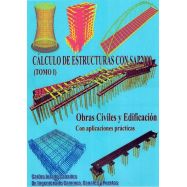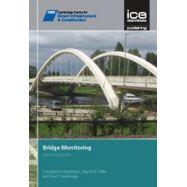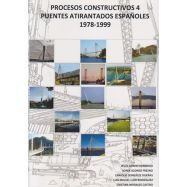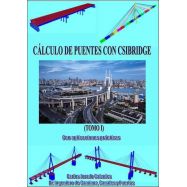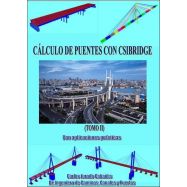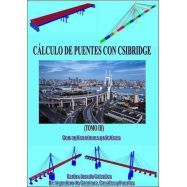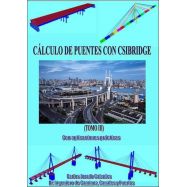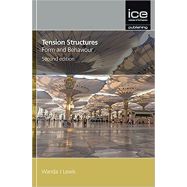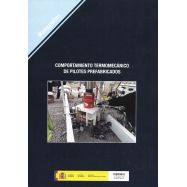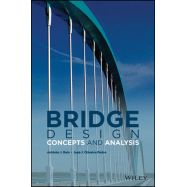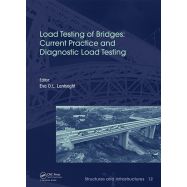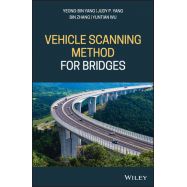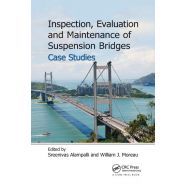Ningún producto
Materias
- BELLISCO EDICIONES. Nuestro Fondo Editorial
- FONDOS EDITORIALES EN DISTRIBUCION
- LIBROS TECNICOS EN INGLES
- ARQUITECTURA - URBANISMO
- AUTOMOCION - MOTORES - VEHICULOS
- AVIONICA - AERONAUTICA
- CALIDAD - EMPRESARIALES - GESTION
- CIENCIAS EXACTAS - MATEMATICAS
- CIENCIAS NATURALES Y APLICADAS
- CIENCIAS DE LA TIERRA - INGENIERIA DEL SUELO
- DICCIONARIOS TECNICOS
- ESTRUCTURAS - CONSTRUCCION
- FORMACION PROFESIONAL
- HIDRAULICA - INGENIERIA SANITARIA - AGUAS
- INGENIERIA CIVIL - OBRAS PUBLICAS
- INGENIERIA MECANICA E INDUSTRIAL
- INSTALACIONES . GENERALES, EN EDIFICACION E INDUSTRIALES
- MATERIALES
- MEDIO AMBIENTE
- NORMATIVA
- OPOSICIONES
- PREVENCION DE RIESGOS LABORALES
- PROGRAMAS INFORMATICOS DE CALCULO
- TECNOLOGIA DE LOS ALIMENTOS: Industrias: Conservación, envasado y cadenas alimentarias
- TELECOMUNICACIONES - INFORMATICA - TECNOLOGIA DE LA INFORMACION
- OUTLET DE BELLISCO: Descuentos de hasta el 80%
- RELIGION, TEOLOGIA, MORAL Y ESPIRITUALIDAD
- VARIOS
- OFERTAS
- PROMOCIONES
- NEWSLETTER
- CATEGORIAS DESTACADAS
- ULTIMAS NOVEDADES BELLISCO
- ARQUITECTURA SOSTENBILE
- URBANISNO
- MATEMATICAS EN GENERAL
- AGRONOMOS-AGRICULTURA-FORESTALES
- ELECTROMAGENTISMO-ELECTRONICA-ELECTRICIDAD
- INGª Y MECÁNICA DEL SUELO. CIMENTACIONES
- TOPOGRAFIA, FOTOGRAMETRÍA, GEODESIA
- EDIFICACION
- ANALISIS DE ESTRUCTURAS, RESISTENCIA DE MATERIALES, ELASTICIDAD, CALCULO MATRICIAL
- OFICIOS VARIOS
- ABASTECIMIENTO Y DISTRIBUCION DE AGUA
- PUENTES
- TUNELES Y OBRAS SUBTERRANEAS
- MAQUINAS Y MECANISMOS
- SOLDADURA
- CLIMATIZACION
- INSTALACIONES DE AGUA
- INSTALACIONES ELECTRICAS CIENCIA E INGENIERIA DE MATERIALES
- ENERGIAS RENOVABLES
- DESARROLLO SOSTENIBLE
- INFORMATICA-SISTEMAS-FORMACION-PROGRAMAS
-
DESIGN OF STEEL-CONCRETE COMPOSITE BRIDGES TO EUROCODES
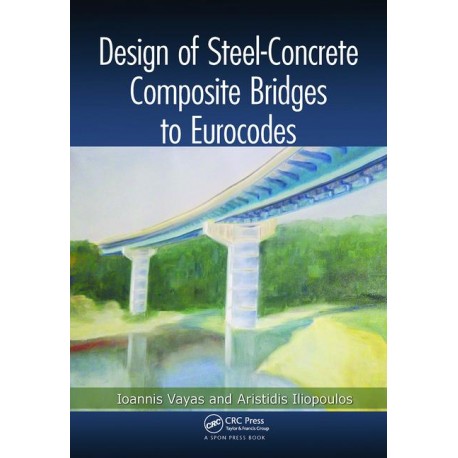 Ver más grande
Ver más grande Referencia: Código 07290
Mayo de 2017 - Ioannis Vayas... - Refª 7290
Ioannis Vayas, Aristidis Iliopoulos
Mayo de 2017 Páginas: 584
Código 7290 ISBN/EAN:9781138076952
Features
- Combines solid theoretical foundation with bridge engineering practice
- Includes general code independent material on conceptual design and structural analysis
- Covers a broad spectrum of subjects such as materials, actions, strength, stability, serviceability, fatigue, seismic design, and bearings
- Includes many illustrative design examples
- Bases information on modern international regulations, the Eurocodes, widely used worldwide
Summary
Combining a theoretical background with engineering practice, Design of Steel-Concrete Composite Bridges to Eurocodes covers the conceptual and detailed design of composite bridges in accordance with the Eurocodes. Bridge design is strongly based on prescriptive normative rules regarding loads and their combinations, safety factors, material properties, analysis methods, required verifications, and other issues that are included in the codes. Composite bridges may be designed in accordance with the Eurocodes, which have recently been adopted across the European Union. This book centers on the new design rules incorporated in the EN-versions of the Eurocodes.
The book addresses the design for a majority of composite bridge superstructures and guides readers through the selection of appropriate structural bridge systems. It introduces the loads on bridges and their combinations, proposes software supported analysis models, and outlines the required verifications for sections and members at ultimate and serviceability limit states, including fatigue and plate buckling, as well as seismic design of the deck and the bearings. It presents the main types of common composite bridges, discusses structural forms and systems, and describes preliminary design aids and erection methods. It provides information on railway bridges, but through the design examples makes road bridges the focal point.
This text includes several design examples within the chapters, explores the structural details, summarizes the relevant design codes, discusses durability issues, presents the properties for structural materials, concentrates on modeling for global analysis, and lays down the rules for the shear connection. It presents fatigue analysis and design, fatigue load models, detail categories, and fatigue verifications for structural steel, reinforcement, concrete, and shear connectors. It also covers structural bearings and dampers, with an emphasis on reinforced elastomeric bearings. The book is appropriate for structural engineering students, bridge designers or practicing engineers converting from other codes to Eurocodes.
Table of Contents
Introduction
General
List of symbols
Types of steel–concrete composite bridges
General
Composite bridges: The concept
Highway bridges
Railway bridges
Construction forms
Erection methods
Concreting sequence
Execution
Innovation in composite bridge engineering
References
Design codes
Eurocodes
National annexes
References
Actions
Classification of actions
Traffic loads on road bridges
Actions for accidental design situations
Actions on pedestrian parapets and railings
Load models for abutments and walls in contact with earth
Traffic loads on railway bridges
Temperature
Wind
Earthquake
References
Basis of design
General
Limit state design
Ultimate limit state (ULS)
Serviceability limit state (SLS)
Safety factors of resistances
Durability
References
Structural materials
Concrete
Structural steel
Reinforcing steel
Prestressing steel
Bolts
Stud shear connectors
References
Modeling and methods for global analysis
Global analysis models
Effective width of wide flanges due to shear lag
Cross-sectional properties
Effects of the rheological behavior of concrete on structural systems
Models for slab analysis and design in transverse direction
Finite element models for global analysis
References
Buckling of plated elements
Introduction
Elastic critical stress
Strength of plates
Design by the reduced stress method
Effective width method
Member verification for axial compression and bending
Resistance to shear
Resistance to concentrated transverse forces
Interaction
Flange-induced buckling
Design of stiffeners and detailing
References
Ultimate limit states
Classification of cross sections
Resistance to tension: Allowance for fastener holes in bending capacity
Resistance of steel members and cross sections to compression
Resistance to shear due to vertical shear and torsion
Resistance to bending of steel cross sections
Interaction of bending with shear for steel cross sections
Class 1 and 2 cross sections
Cross sections with class 3 webs that may be treated as class 2 sections (hole-in-web method)
Class 3 cross sections
Class 4 cross sections that are treated as class 3 cross sections
Class 4 cross sections
Class 4 cross sections composed of the flanges
Lateral torsional buckling
Design of the concrete deck slab
References
Serviceability limit states
Introduction
Stress analysis and limitations
Cracking of concrete
Web breathing
Deflections
Vibrations
References
Fatigue
General
Fatigue resistance to constant amplitude loading
Fatigue resistance to variable amplitude loading
Detail categories
Fatigue load models and simplified fatigue analysis
Fatigue verification for structural steel
Fatigue verification for headed studs
Fatigue verification for reinforcing steel
Fatigue verification for concrete
Possibilities of omitting fatigue assessment
Residual stresses and postweld treatment
References
Shear connection
Introduction
Resistance and detailing of headed stud shear connectors
Longitudinal shear for elastic behavior
Longitudinal shear for inelastic behavior
Longitudinal shear due to concentrated forces
Longitudinal shear in concrete slabs
Shear connection of composite closed box bridges
References
Structural bearings, dampers, and expansion joints
General
Reinforced elastomeric bearings
Spherical bearings
Pot bearings
Seismic isolation
Anchorage of bearings
Calculation of movements and support reactions
Bearing schedules, support plans, and installation drawings
Fluid viscous dampers
Friction devices
Expansion joints
References
Index
TAMBIEN LE PUEDE INTERESAR
- 152,10 €
- 51,30 €
- 61,20 €
- 54,00 €
- 26,10 €


